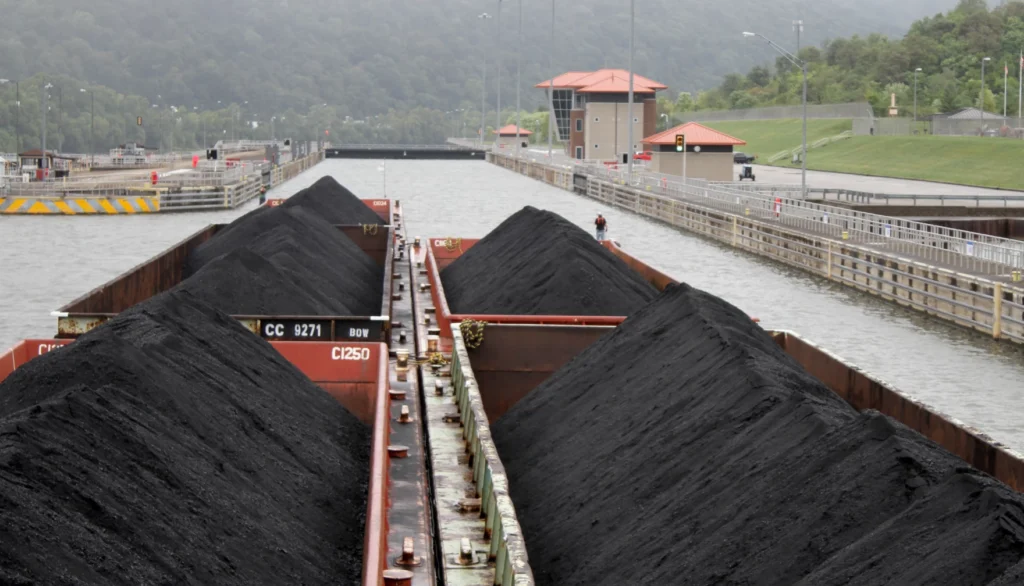Updated on Friday, Nov. 17, with comment from Mon Power.
Two years ago, West Virginia power plants didn’t have enough coal. Now, the situation has reversed, and some have too much.
Mon Power operates two coal-burning power plants in the state: Harrison in Harrison County and Fort Martin in Monongalia County.
According to written testimony to the Public Service Commission by expert witnesses, both plants are maxed out on the coal they can safely store on site.
At Fort Martin, the stockpile has grown to more than twice the plant’s limit of 600,000 tons. The excess is being stored off-site. At Harrison, the plant has periodically operated more than needed to manage the 850,000-ton limit for storage. Both solutions incurred additional costs.
Hannah Catlett, a spokeswoman for Mon Power, said the company “ensures it has ample tons of coal to generate electricity especially during peak times of winter and summer.”
The PSC reviews its fuel costs every year for prudency, she said, adding that Mon Power does not burn coal uneconomically.
Natural gas prices have declined this year, and plants that use coal are not as competitive.
On Nov. 30, the PSC will hold an evidentiary hearing on Mon Power’s proposed rate increase.
Under Mon Power’s proposal, the average residential user would see an increase from $120 a month to $129, a nearly 8 percent increase, starting Jan. 1. In March, an additional 89-cent increase would kick in, bringing the monthly average bill to $130 a month.






















